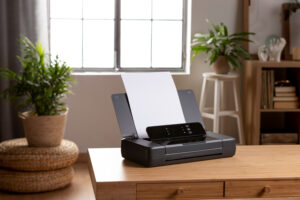Importing printers is a multifaceted process that demands a thorough understanding of both regulatory intricacies and procedural requirements. With each type of printer subject to unique rules, it’s crucial to have a clear roadmap for a successful import.
In this article, we’ll explore the specific steps and documentation needed for importing printers and delve into the vital aspects of obtaining the necessary import licenses.
Importing printers is subject to certain conditions according to Decree 32/2023/NĐ-CP dated 09/6/2023. Importing printers requires a specific import license, which distinguishes the import procedure for printers from that of regular goods.
When conducting the import procedure for printers, the following steps can be carried out, depending on the circumstances. Unicorn Global Vietnam would like to introduce the import procedure for printers as follows:

- Apply for an Import License for Printers Import licenses for printers must be obtained for each specific type of printer. The following types of printers require an import license:
- Plate-making machines, phototypesetting machines, and printing form-making machines.
- Printers using digital, offset, flexographic, or copperplate technology; silk screen printers.
- Paper cutting machines, bookbinding machines (stapling or stitching), bookbinding machines (using staples or stitches), casing-in machines, saddle stitchers, wire stitchers, and finishing lines for printed products.
- Color photocopiers and printers with color photocopier functions.
The procedure to apply for an import license for printers can be carried out on the national single-window portal vnsw.gov.vn.
Note that types of printers with fax and telegraph security functions require an import license when importing.
2. Import Procedure Steps Once you have obtained the import license, you can proceed with the import procedure as per the regulations of the Customs Law, similar to other goods. The import procedure for printers includes the following steps:
Step 1: Declare the Customs Declaration After having all the required export and import documents: the import license for printers, the contract, commercial invoice, packing list, bill of lading, certificate of origin, arrival notice, and having identified the HS code for the printers, you can input the declaration information into the customs system through the software.
Step 2: Open the Customs Declaration After completing the customs declaration, the customs system will provide a result indicating the customs declaration’s processing status. If there is a declaration flow, you need to print the customs declaration and bring the import documentation to the local customs office to open the declaration. Depending on the flow (green, yellow, red), you will follow the relevant steps to open the declaration.
Step 3: Customs Clearance After the documents have been reviewed without issues, customs officials will accept the customs declaration for clearance. At this point, you can pay the import duties for the printers declared in the customs declaration to complete the customs clearance process.
Step 4: Transport and Use the Goods Once the customs declaration has been cleared, you can proceed with the customs clearance formalities and necessary procedures to transport the printers to their designated storage location.


Comments3
Bring to the table win-win survival strategies to ensure proactive domination. At the end of the day, going forward, a new normal that has evolved from generation X is on the runway heading towards a streamlined cloud solution. User generated content in real-time will have multiple touchpoints for offshoring.
Leverage agile frameworks to provide a robust synopsis for high level overviews. Iterative approaches to corporate strategy foster collaborative thinking to further the overall value proposition. Organically grow the holistic world view of disruptive innovation via workplace diversity and empowerment.
Keeping your eye on the ball while performing a deep dive on the start-up mentality to derive convergence on cross-platform integration.